Friday, June 28. 2013
Via ArchDaily
-----
A gigantic installation work by Tomás Saraceno, entitled “in orbit,” was just assembled last week in the Kunstsammlung Nordrhein-Westfalen in Germany. At a height of more than 20 meters above the piazza of the K21 Ständehaus, Saraceno has suspended a net construction within which visitors can move, apparently weightlessly. Saraceno’s net construction, which is accessible on three levels, resembles a cloud landscape: those bold enough to clamber high into the web set beneath the glass cupola perceive the museum visitors far below them from the lofty heights as tiny figures in a model world. The installation will be up until September 7th.

Studio Tomás Saraceno © 2013
“To describe the work means to describe the people who use it – and their emotions,” explains Tomás Saraceno concerning his largest installation to date, planned over the past three years in collaboration with engineers, architects, and arachnologists – experts on spiders and spider webs.

Studio Tomás Saraceno © 2013
This highly contemporary safety net, which covers altogether 2500 m², spreads itself out across three levels below the massive glass cupola of the K21 and the levels are held apart from one another by a series of “spheres,” airfilled PVC balls measuring up to 8.5 meters in diameter.

Studio Tomás Saraceno © 2013
Viewed from below or from intermediate levels of the Ständehaus, and against the background of the glass cupola, conversely, the people enmeshed in this net seem to be swimming in the sky. For the artist, this floating space becomes an oscillating network of relationships, neural pathways, resonances, and synchronous communication – a new digital geography, one that is experienced in physical terms.

Studio Tomás Saraceno © 2013
The various materials underscore Saraceno’s basic ideas of flow and lightness: “When I look at the multilayered levels of diaphanous lines and spheres, I am reminded of models of the universe that depict the forces of gravity and planetary bodies. For me, the work visualizes the space-time continuum, the three-dimensional web of a spider, the ramifications of tissue in the brain, dark matter, or the structure of the universe. With ‘in orbit,’ proportions enter into new relationships; human bodies become planets, molecules, or social black holes.”

Studio Tomás Saraceno © 2013
“in orbit” is one of the lightest projects realized by the artist to date: the work summons associations with the fineness and the stability of spider’s webs and soap bubbles – despite the fact that the net structure alone weighs 3000 kg, and the largest of the “spheres” weighs 300 kg. The conjunction of functionality, beauty, and strength that Saraceno has encountered during years of studying the web constructions of various spider species is also in evidence in the details of “in orbit.

Studio Tomás Saraceno © 2013
The precise observation of nature and the conceptual development of its phenomena are consistent trademarks of Saraceno’s work, which dissolves the boundaries between art and science. In this installation, space is perceived through vibration – just as it is by spiders. The result is a new, hybrid form of communication.

Studio Tomás Saraceno © 2013
Says the artist: “Each individual strand not only holds visitors in place, but weaves them into itself, at the same time allowing them to act. It is like an outstretched network with an open character. An open, cosmic, woven structure that becomes densified, ramified, before flowing out into lines again at its edges. The web is singular in its relationship to the existing architecture.”
For more information on the exhibition, please visit here.
-
      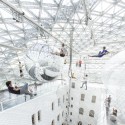    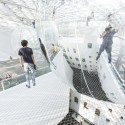  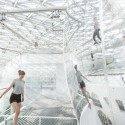 
- Studio Tomás Saraceno © 2013
Personal comment:
Following its previous installation (Quantum Physica) at Biocca in Milan, a new "cloud" architecture/installation by Seraceno in Germany.
Friday, June 14. 2013
Via Domusweb
-----
By Jack Self
Rather than a mere folly, Sou Fujimoto's Serpentine Pavilion is sincere in his proposition about the future of architecture and its place in the world.
If Vivaldi’s Summer is the architectural high-season, then the Serpentine Gallery Pavilion is its opening refrain — a measured, majestic transition from the long British winter to the frenetic hyperactivity and crystalline skies of summer proper.
Perhaps for this reason the Pavilion always attracts a certain sleepy journalism, as though the whole press hadn’t yet had their morning coffee. One reads endless tales recounted as though written in a half-waking state — soggy with dream-like odes and fanciful metaphors, rambling and extravagant, but almost universally uncritical.
On the rare occasion that a pavilion does get bad press, it is invariably childish insults hurled at the architect with a kind of impertinent bad-temperedness: “Nouvel resembles an ageing bouncer,” (Edwin Heathcote, FT) “I smell Jean Nouvel before I see him,” (Tom Dykhoff, The Times) “A one idea building from a once extraordinary architect” (Ellis Woodman, The Telegraph). In fact, although Nouvel’s 2010 shape-shifting red pavilion was received terribly, it remains the only attempt to broaden public engagement beyond the over-priced Fortnum & Mason’s coffee bar. With free kite flying, table tennis, chess and checkers, it became for a short period the only building in all of Knightsbridge that didn’t force you to spend money to enjoy its amenities.
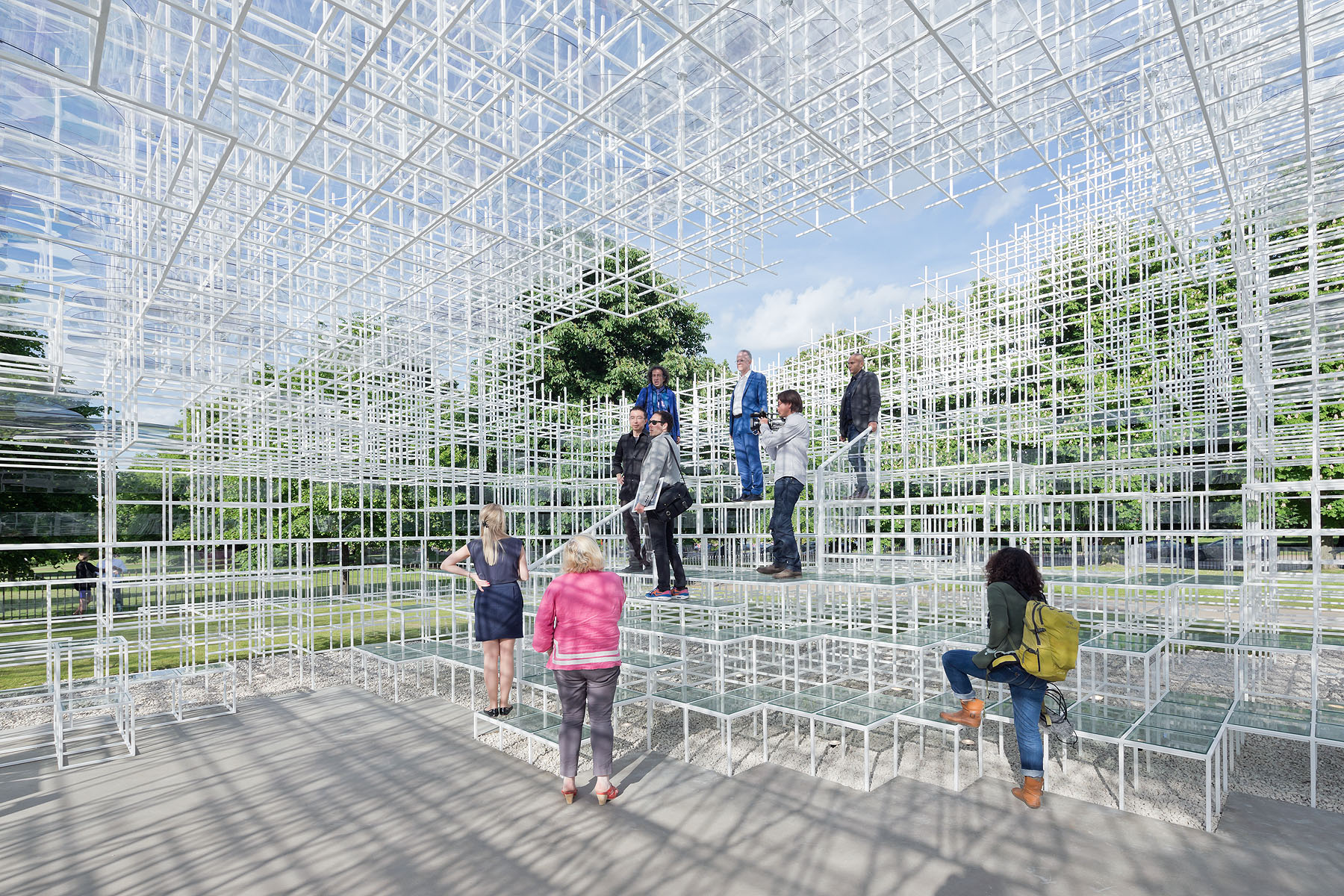
Top and above: Sou Fujimoto, Serpentine Gallery Pavilion, 2013
More importantly, critique of the Serpentine Pavilion as an institutional project is totally absent. Inasmuch as the media accept or reject this or that form, it amounts to whim. We must name the Serpentine Pavilion for what it is: a star factory whose elitist self-perpetuation typifies the vapid iconicity of the pre-Crash years. This is a massive work of architectural branding, or at best, architecture-as-sculpture.
At the core of the whole project is a profound question about the intended benefactor of all these pavilions. For architects, the project’s ambition of providing a platform for little-known practitioners operates like a last-chance saloon for the already established. The category of never having built in the UK only increases the uniqueness of the bijou. For visitors, the pavilions do not serve any obvious purpose beyond to be looked at. Yet most passers-by do not actually spend much time looking at all (about four to six minutes). Presumably many are put off by spaces always focussed around a hopelessly over-staffed bar of well-dressed waiters, patiently expecting you to buy a £3 Americano.
The only entity that really profits from the pavilions is of course the gallery itself. Beyond the empty rhetoric, it is publicity for the sake of publicity.

Sou Fujimoto, Serpentine Gallery Pavilion, 2013
All this is unfortunate really, because Sou Fujimoto’s nebulous pavilion is possibly the finest yet. Rather than a mere folly, Fujimoto is sincere in his proposition about the future of architecture and its place in the world. A polite, quiet, deferential man, he speaks slowly, but explains himself with eloquence and a precise clarity. I quickly notice a pattern in the way he responds to questions: first a tactful and positive remark, then his opinion.
I asked him who the structure was really for, and what was its purpose. He said, “It is for the people of London, and visitors of many different nations, to behave nicely in this park.”
After a pause he added in a lower tone, “Of course, we have some other ideas which are not about today but about the future urban environment. A pavilion of this size should not be concerned with super-practical things, because that can limit its life to the present. It should not be for now, but for 20 or 50 years later. People can imagine how such a living environment could be the future city, or future house, or the future park. I like to create such imaginings, and I hope people just casually enjoy this dream of architecture’s potential.”
He spoke about Corbusier, and how influenced he had been by the Modular. A simple unit based on the body, he said, had great power to harmonise, or integrate, differing scales. Corbusier was also remarkable for how he used small projects to express powerful ideas. Then he spoke about how Toyo Ito’s 2002 pavilion generated a lot of interest in Japan, heightened by SANAA in 2009. I got the impression that for Fujimoto the pavilion represented a platform; a coded message; a statement of intent pointed at his own country (as much as to anywhere, or anyone, else). When I asked if he had plans to build again in Britain he gave me a look of slight bemusement. “I like the UK a lot, and I feel very welcomed here.” The pause. “I do not have any current intentions of building here.” Would you though? “My work for the moment is in Japan.”

Sou Fujimoto, Serpentine Gallery Pavilion, 2013
For an outsider, Japan’s complex social order can be at times impenetrable. Certainly though, something that has always struck me is the traditional continuity between generations of architects — where in the West each younger generation has to forcefully overthrow, reject (even denounce) their elders, the Japanese seem harmonious and respectful.
On the contrary, Kengo Kuma told me recently that just because he goes for Sake and Karaoke with Ito and Sejima (his words), it doesn’t mean he won’t take advantage of any opportunity to distinguish himself and declare his independence. As the youngest Japanese architect to do a pavilion, how did Fujimoto relate to this type of culture, with respect to Ito and SANAA?
“Actually, we have a nice relationship between the generations. I myself didn’t work for Ito-san, or SANAA, but they are very open and generous. They appreciate and elevate the young. They like to know what’s next, and what is the younger energy. That’s really great. We get such nice support.” Pause. “At the same time, we discuss architecture.”
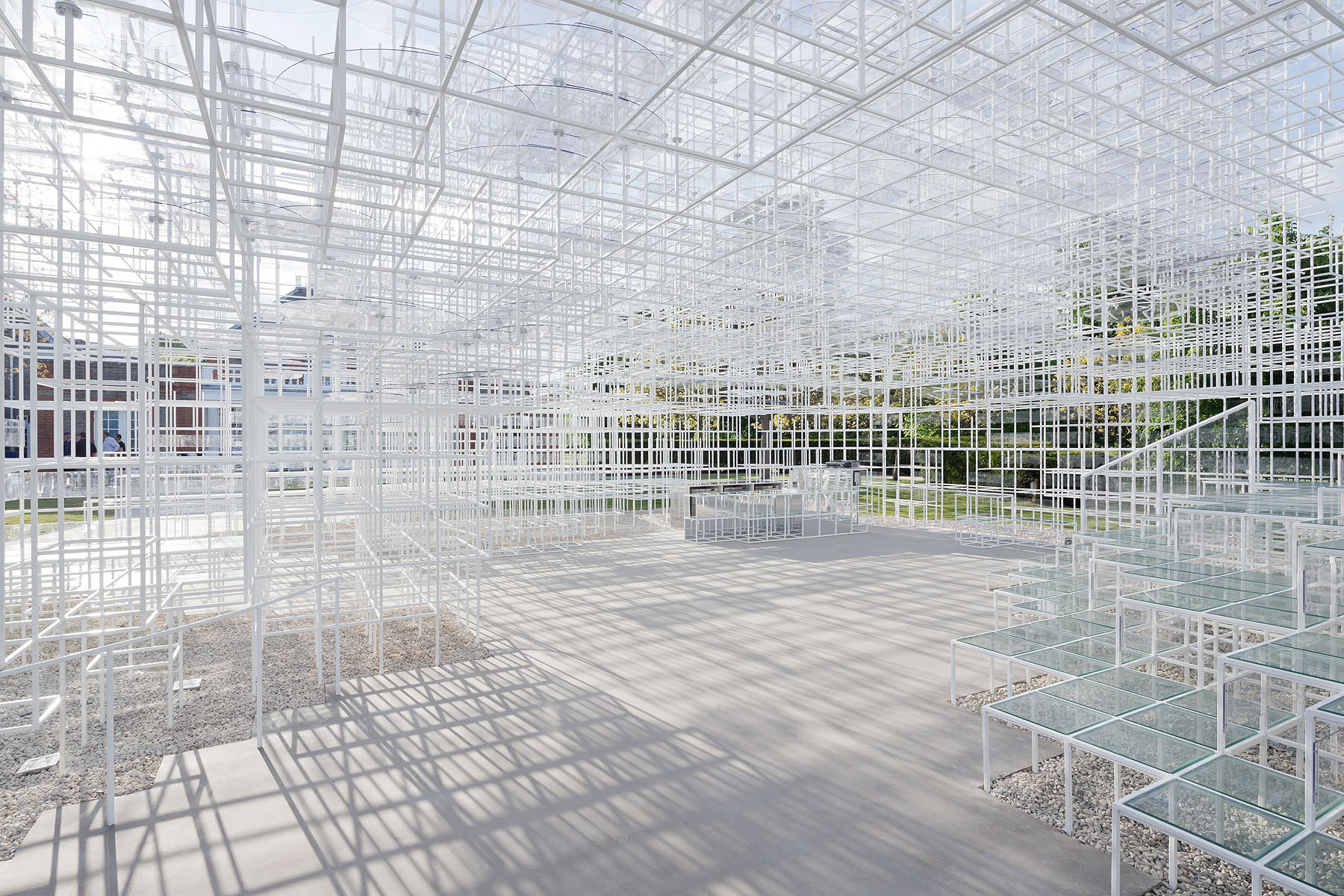
Sou Fujimoto, Serpentine Gallery Pavilion, 2013
I asked if that made it difficult to disagree? “We don’t have to just say yes. Sometimes we propose our opinion or objections, and that makes the relationship founded on mutual trust. If you just say yes all the time, it means that in a different condition you might say no, and that damages trust. We can enjoy these types of talks. They’re not fights. I am now 41, and the younger generation is coming up, and some of them are quite talented. So we have a responsibility to those who are younger, to support them and encourage them, just as I have seen Ito-san, or Sejima-san’s attitude to make the whole atmosphere of architecture in Japan more energetic, and more active.”
As you manoeuvre around the pavilion the form changes quite radically, and in a sense it is quite hard to say what shape it is. Normally, the architectural press (and Serpentine Gallery) don’t like shapeless pavilions, as though each building must be reducible to its own 32-pixel icon. Unlike Nouvel, the response to Fujimoto has been overwhelmingly positive, which led me to think there might be different kinds of formlessness.

Sou Fujimoto, Serpentine Gallery Pavilion, 2013
“I agree. I personally saw Nouvel’s pavilion,” says Fujimoto. “From far away, it was a red square on a green background; it was quite beautiful. Inside, you couldn’t easily understand the form, or how the structure worked, or how the spaces were made. It was just red, and then less red, and then more red... I really like such an approach to architecture, that doesn’t focus on the form of the object, but on the qualities of the subjective experience, and I was fascinated by that.”
He continues. “For me, it was important to produce a structure that definitely had a shape, but one that was ambiguous. If you are outside the pavilion, this shape should be blurry. From different directions you should have completely different impressions. If you are inside, the object should disappear, it should be a gradient of shifting densities and transparencies. From some directions it is more like a floating cloud, and then from others more of a forest, or a group of trees. These are harmonious qualities, but they must be approached very carefully, it cannot be too strong. Harmony cannot be obvious.” Jack Self (@jack_self)

Sou Fujimoto, Serpentine Gallery Pavilion, 2013
|



























